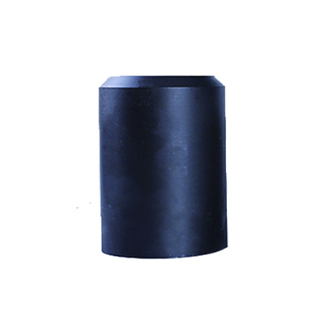- Afrikaans
- Albanian
- Amharic
- Arabic
- Armenian
- Azerbaijani
- Basque
- Belarusian
- Bengali
- Bosnian
- Bulgarian
- Catalan
- Cebuano
- Corsican
- Croatian
- Czech
- Danish
- Dutch
- English
- Esperanto
- Estonian
- Finnish
- French
- Frisian
- Galician
- Georgian
- German
- Greek
- Gujarati
- Haitian Creole
- hausa
- hawaiian
- Hebrew
- Hindi
- Miao
- Hungarian
- Icelandic
- igbo
- Indonesian
- irish
- Italian
- Japanese
- Javanese
- Kannada
- kazakh
- Khmer
- Rwandese
- Korean
- Kurdish
- Kyrgyz
- Lao
- Latin
- Latvian
- Lithuanian
- Luxembourgish
- Macedonian
- Malgashi
- Malay
- Malayalam
- Maltese
- Maori
- Marathi
- Mongolian
- Myanmar
- Nepali
- Norwegian
- Norwegian
- Occitan
- Pashto
- Persian
- Polish
- Portuguese
- Punjabi
- Romanian
- Russian
- Samoan
- Scottish Gaelic
- Serbian
- Sesotho
- Shona
- Sindhi
- Sinhala
- Slovak
- Slovenian
- Somali
- Spanish
- Sundanese
- Swahili
- Swedish
- Tagalog
- Tajik
- Tamil
- Tatar
- Telugu
- Thai
- Turkish
- Turkmen
- Ukrainian
- Urdu
- Uighur
- Uzbek
- Vietnamese
- Welsh
- Bantu
- Yiddish
- Yoruba
- Zulu
Understanding Bull Plug Pressure Ratings for Safe Drilling Operations
Understanding Bull Plug Pressure Ratings Key Considerations for Industrial Applications
In various industrial sectors, understanding the specifications and ratings of equipment is crucial for ensuring safety, efficiency, and reliability. One such specification that requires attention is the pressure rating of bull plugs. These devices are often used in different applications involving pressurized systems, particularly in oil and gas, chemical processing, and water treatment industries. This article aims to elucidate the importance of bull plug pressure ratings, how they are determined, and factors to consider when selecting the appropriate bull plug for a specific application.
What is a Bull Plug?
A bull plug, also known as a blind plug, is a type of fitting that is designed to seal off an opening in a pipeline or a vessel. Typically threaded on one end, they are used to block the flow of a fluid or gas, effectively sealing off the system from the environment or preventing the escape of materials. The other end of the bull plug is usually a solid piece, providing a robust closure to the system.
Importance of Pressure Ratings
The pressure rating of a bull plug is a key specification that determines its ability to withstand internal pressure without failure. This rating is crucial, especially in high-pressure systems where the integrity of components is vital for safety and operational efficiency. A bull plug that is rated for a lower pressure than that of the system can lead to catastrophic failures, resulting in leaks, equipment damage, and potential hazards to personnel and the environment.
Determining Pressure Ratings
Pressure ratings of bull plugs can be influenced by several factors, including the material from which the plug is made, its size, and the design standards it adheres to. Common materials used for manufacturing bull plugs include stainless steel, carbon steel, and various alloys. Each material has its own mechanical properties and resistance to corrosion, influencing its pressure-bearing capacity.
The size of the bull plug, indicated by its nominal pipe size (NPS) or diameter (DN), also plays a significant role in its pressure rating. Generally, larger diameters can result in lower pressure ratings due to increased material stress. Additionally, the design standards such as ANSI, ASME, or API set specific guidelines for pressure ratings based on the intended application of the plug.
bull plug pressure rating

Selecting the Right Bull Plug
When selecting a bull plug, several considerations must be taken into account
1. Determine the System Pressure Before selecting a bull plug, it is important to know the operating pressure of the system. The bull plug's pressure rating must exceed this pressure to ensure safety.
2. Assess Compatibility with Fluid It is essential to assess the chemical compatibility of the bull plug material with the fluid or gas being contained. For example, harsh chemicals or high temperatures may require special materials or coatings.
3. Consider Temperature Ratings Alongside pressure ratings, temperature limits of materials should also be reviewed. High temperatures can weaken certain materials, leading to potential failure even below the specified pressure rating.
4. Check Certification and Standards Compliance It’s advisable to choose bull plugs that comply with relevant industry standards and certifications. This ensures that they have been tested and rated under recognized criteria.
5. Evaluate the Application Environment Environmental factors such as external pressure, vibrations, and exposure to corrosive elements should also be factored into the selection process.
Conclusion
Bull plugs play a vital role in maintaining the integrity of pressurized systems across many industries. Their pressure ratings are fundamental to ensuring operational safety and reliability. By understanding the factors that influence these ratings and making informed selections based on system demands, operators can significantly reduce the risk of failures and enhance overall safety. Investing in high-quality bull plugs with appropriate pressure ratings is essential for any operation that involves handling pressurized fluids or gases, ultimately leading to efficient and safe industrial practices.
-
Tubing Pup Joints: Essential Components for Oil and Gas OperationsNewsJul.10,2025
-
Pup Joints: Essential Components for Reliable Drilling OperationsNewsJul.10,2025
-
Pipe Couplings: Connecting Your World EfficientlyNewsJul.10,2025
-
Mastering Oilfield Operations with Quality Tubing and CasingNewsJul.10,2025
-
High-Quality Casing Couplings for Every NeedNewsJul.10,2025
-
Boost Your Drilling Efficiency with Premium Crossover Tools & Seating NipplesNewsJul.10,2025







